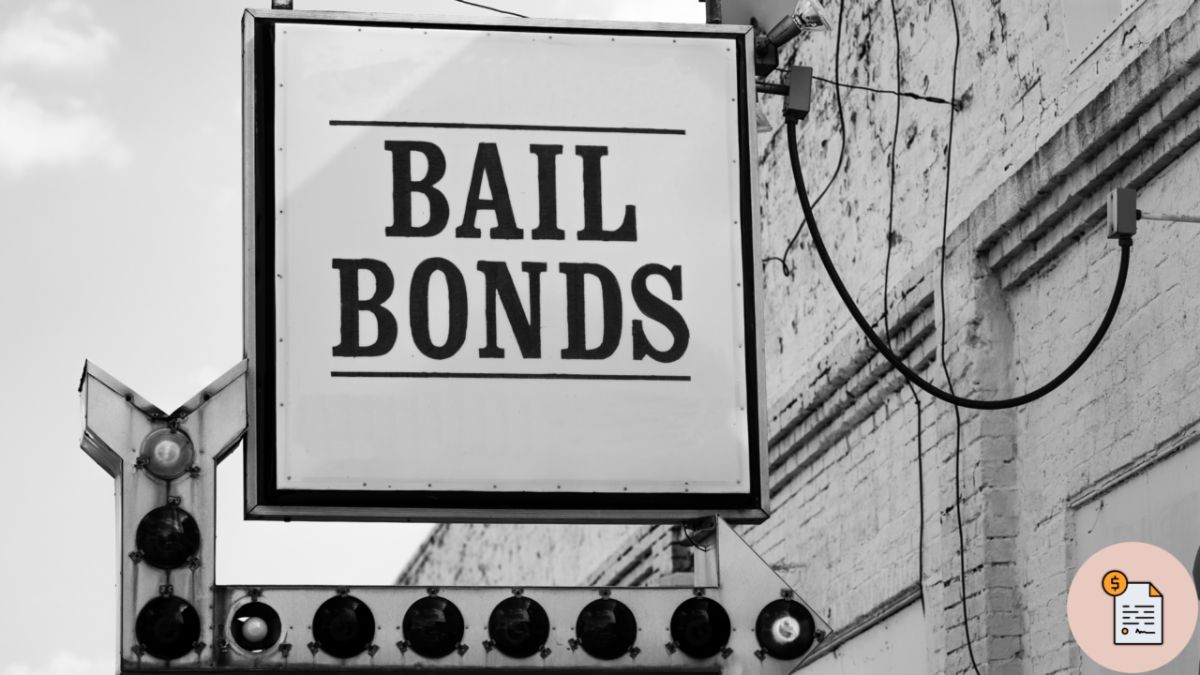LAW
What is the Mutual Combat Law and How Does It Work?

Imagine two people willingly engaging in a physical fight but without facing traditional assault charges. It might sound unusual, but in certain states within the United States, this scenario is legally allowed under a provision known as the “Mutual Combat Law.” Despite its niche recognition, this law sparks curiosity and raises significant legal and ethical questions.
If you’ve stumbled upon mentions of mutual combat in pop culture or been intrigued by viral stories involving street fights with seemingly no repercussions, this blog dives into the ins and outs of this unique legal concept. We’ll cover what mutual combat law is, where it’s applicable, and why it remains such a controversial topic in today’s legal system.
What is the Mutual Combat Law?
Mutual combat law refers to a legal provision that allows two consenting adults to engage in physical combat under certain conditions without either party being charged with assault. The idea is that if both parties agree to fight voluntarily, recognizing the risks involved, then the law may not necessarily intervene.
However, this is not a free-for-all license to provoke violent encounters. The presence of mutual consent—a clear acknowledgment between both parties that they wish to engage in combat—is the keystone of mutual combat law. Additionally, this consent must be voluntary and not coerced or influenced by external factors such as fraud or duress.
Key Elements of Mutual Combat Law:
- Both parties must be consenting adults.
- The fight must usually occur in a non-public or controlled area to avoid endangering third parties.
- There should be no excessive harm or actions well beyond agreed terms.
- Weapons often constitute a complex issue and may shift mutual combat into criminal behaviors.
Many cases of mutual combat focus explicitly on hand-to-hand combat, with laws becoming less permissive when weapons or severe injuries are involved.
Where Does Mutual Combat Law Apply?
Mutual combat laws exist in a limited number of states and jurisdictions. However, even in places where it is recognized, it is governed by strict laws and is rarely exercised openly. Below are some states where mutual combat is legally relevant:
1. Washington State
Washington recognizes mutual combat under specific conditions. According to Washington state law, police officers can witness and oversee a fight, ensuring it remains consensual and does not pose risks to bystanders. This provision essentially allows peaceful combat but strictly criminalizes non-consensual violence or actions causing severe injury.
2. Texas
Texas, renowned for its strong individual rights, allows mutual combat under the Penal Code. However, both parties must agree to the act beforehand, and the combat must not escalate to actions that could endanger life or result in irreversible harm.
3. Colorado
Colorado has similar provisions to Washington and Texas. While the law may allow engaging in mutual combat, the situation is tightly monitored, and any act deemed excessive or endangering public safety is punishable by law.
It’s important to understand that these laws are not invitations to act unlawfully. For instance, if excessive injury or third-party interference is involved, mutual combat claims may not hold up in court.
The Ethical Debate Around Mutual Combat
Although technically legal in some regions, mutual combat raises numerous ethical questions. Should the state permit individuals to engage in violence voluntarily? Does mutual combat contradict foundational aspects of law and order?
Arguments in Favor of Mutual Combat:
- Freedom of Choice: Advocates often argue that consenting adults should be allowed to resolve disputes in this manner if both parties willingly participate.
- Decriminalization of Fights: Mutual combat eliminates unnecessary criminal charges that may arise from an agreed dispute, saving courts time and resources.
- Cultural Ties: Historically, dueling or consensual combat has been a way to resolve conflicts, and in some communities, it is considered a tradition.
Arguments Against Mutual Combat:
- Public Safety Risks: Even “consensual” fights can escalate quickly and have unintended consequences, especially in public spaces.
- Undermines Law Enforcement: Critics suggest mutual combat may weaken societal norms around nonviolence, ultimately creating challenges for policing systems.
- Complexity of Consent: Questions arise about whether true consent is always possible, particularly in heated conflicts.
While philosophies surrounding mutual combat differ widely, the legal system treads cautiously — ensuring that potential loopholes do not foster abuse or severe harm.
When Does Mutual Combat Cross Legal Boundaries?
Even in states where mutual combat is legally recognized, there are boundaries that participants cannot cross. Situations that often lead to disqualification of mutual combat include:
-
Severe Injury or Death
If a fight results in life-threatening injuries or death, mutual combat claims may not protect the parties involved, and the incident may be treated as a criminal assault or manslaughter.
-
Weapon Use
Weapons such as guns, knives, or blunt objects often complicate cases. The use of lethal tools removes most protections offered by mutual combat laws.
-
Endangerment of Bystanders
Mutual combat is heavily regulated to ensure the safety of others. If a fight puts a third party in harm’s way or escalates into public danger, it will likely result in significant legal consequences.
-
Unclear Consent
For a fight to fall under mutual combat law, consent must be well-documented or evident. Without clear proof, legal protections are unlikely to apply.
Pop Culture and Mutual Combat
Mutual combat has gained notable attention in pop culture and digital discussions, largely thanks to viral videos and debates over real-life incidents. Movies, TV shows, and even casual internet banter have fueled larger-than-life representations of the concept—often simplifying its subtler legal intricacies.
Consider films or stories revolving around dueling protagonists—these portray an idealized and dramatized view of mutual combat, while its real-world applications remain rare and fraught with complications.
What Does the Future Hold for Mutual Combat?
The future of mutual combat laws is unclear. While some argue for their preservation as tools for informal conflict resolution, others believe they are outdated vestiges of less civilized times. Discussions of reform or repeal continue to emerge, particularly in states that no longer see the practice as relevant given modern legal and societal frameworks.
One certainty remains strong—mutual combat laws are best approached with caution and careful consideration. What begins as a consensual argument between two parties can quickly escalate far beyond expectations, leaving lasting legal and ethical consequences.
Does Mutual Combat Make Sense in a Lawful Society?
Mutual combat exists at the intersections of law, tradition, and personal freedom. While it offers a unique approach to conflict resolution, it is not without its challenges and controversies. Understanding the legal boundaries and ethical questions surrounding mutual combat is crucial for anyone considering it as a viable dispute solution.
With evolving opinions on violence, conflict resolution, and public safety, the mutual combat law will likely remain a topic of ongoing legal and cultural discourse.
Would you honor the law or steer clear? Share your thoughts in the comments below!
FAQs
1. What is mutual combat?
Mutual combat refers to a legal situation where two consenting individuals voluntarily agree to engage in physical combat under certain conditions that are recognized by law in some jurisdictions.
2. Is mutual combat legal everywhere?
No, mutual combat is not legal in all areas. The legality depends on the laws of the specific state or country, and even in places where it is allowed, there are often strict regulations and conditions surrounding it.
3. Can someone still face charges after mutual combat?
Yes, participants can still face legal consequences if the fight results in significant injury, property damage, or violates other laws, such as disturbing the peace or public safety statutes.
4. How do authorities regulate mutual combat?
Authorities typically enforce specific guidelines, such as ensuring that both parties enter the fight consensually, and some jurisdictions may require neutral witnesses or law enforcement to oversee the event to ensure public order and safety.
5. Why is mutual combat controversial?
Mutual combat raises ethical and societal concerns, including the normalization of violence as a conflict resolution method and the potential for bystanders or the public to be negatively affected.
LAW
The Rise of Bebasinindo More Than Just a Trend – It’s a Lifestyle

Language evolves with society—and sometimes, a single word becomes a whole movement. That’s exactly what Bebasinindo is turning into. But what is this trending term, and why is everyone suddenly using it? Let’s dive into the world of Bebasinindo, where language meets culture, freedom, and identity. Bebasinindo is a newly coined term that blends “bebas” (meaning “free” in Indonesian) with “inindo”, a suffix that hints at something uniquely Indonesian. Together, the word represents freedom of expression, individuality, and unfiltered creativity—all in an Indonesian context. It’s more than slang. It’s a mindset.
Why Is Bebasinindo Gaining Attention?
Bebasinindo is gaining massive attention because it speaks directly to a new generation that values freedom, authenticity, and self-expression. In a society that often emphasizes conformity and tradition, this term offers a refreshing sense of rebellion and individuality. It’s easy to say, fun to use, and loaded with meaning—making it perfect for viral content. Social media platforms have supercharged its reach, turning it into a cultural badge for those who want to be bold and unapologetically themselves. Simply put, Bebasinindo captures the spirit of modern Indonesia in just one word.
Historical and Cultural Roots
There’s no official dictionary that contains Bebasinindo—yet. The word grew from a blend of grassroots youth culture and online conversations. Many trace its roots back to Indonesian Gen Z forums, where bebas became a rallying cry. Traditionally, Indonesian society values politeness, harmony, and conformity. Bebasinindo breaks that mold. It’s the new rebellion—one that happens through memes, voice notes, and TikTok captions instead of protest signs.
Bebasinindo in Popular Culture
Platforms like Twitter (X), TikTok, and Instagram Stories catapulted Bebasinindo into viral status. Hashtags like #bebasinindo now feature skits, debates, poetry, and even song lyrics that celebrate free speech and open expression. Indonesian youth are savvy linguists. They’ve taken Bebasinindo and twisted it into:
- Bebasin aja (Just be free)
- Bebas banget inindo style (Super free, Indonesian-style)
It’s like the new YOLO—only more culturally rooted.
Bebasinindo in Different Regions
Even though the term started in Java, it’s spreading like wildfire across Sumatra, Bali, Sulawesi, and beyond. Jakarta, the cultural trendsetter, is the epicenter of Bebasinindo’s usage. Street art, spoken word nights, and indie brands all embrace it. In urban settings, Bebasinindo means open expression. In rural areas, it’s taken more cautiously—interpreted as a call for independence within social limits.
Social and Psychological Impacts
Bebasinindo is about owning your identity—language as a badge of who you are. It’s informal, bold, and 100% homegrown. Think of Bebasinindo as verbal graffiti—it reflects the collective mood of a younger, bolder, more outspoken generation. From memes to GIFs to short videos, #bebasinindo is now a cultural tag for content that feels authentic, rebellious, and hilarious. Bloggers, streamers, and podcasters are hopping on the Bebasinindo trend to build loyal communities. It’s content with soul.
Educational Perspectives
Unofficially, yes. Students use it among peers, especially in creative assignments or discussions around culture and identity. Teachers are recognizing that Bebasinindo reflects real language evolution, and some progressive educators are using it to teach media literacy.Some conservative figures argue that Bebasinindo promotes recklessness and disrespect for tradition. They see it as a linguistic rebellion. This clash has sparked debates on whether Bebasinindo corrupts or refreshes the Indonesian language.
The Business Side of Bebasinindo
Brands are jumping on the Bebasinindo trend to connect with younger, more expressive audiences. From fashion labels to coffee shops, businesses are using the word in slogans and campaigns that promote creativity and freedom. It adds a cool, relatable vibe that speaks directly to Gen Z and Millennials. Limited-edition merch, bold packaging, and social media ads now feature Bebasinindo-inspired messaging. It’s not just slang—it’s smart marketing with cultural impact.
Future of Bebasinindo
Bebasinindo is still in its honeymoon phase, but its deep cultural resonance suggests it might stick around—especially if it keeps evolving. By 2030, Bebasinindo might be a recognized sociolinguistic movement. It could even enter textbooks or be analyzed in universities.
- “Gue lagi pengen bebaskan pikiran, bro.” (I just wanna free my mind, bro.)
- “Style gue? Bebasinindo banget!” (My style? Totally Bebasinindo!)
Avoid it in formal documents, academic writing, or job interviews—unless the company is super progressive.
Bebasinindo vs Similar Movements
Bebasinindo shares similarities with global expressions like YOLO, “stay woke,” or “keep it real,” but with a uniquely Indonesian twist. While those movements emphasize self-awareness and freedom, Bebasinindo blends that spirit with local culture and language. It’s not just about living freely—it’s about doing it the Indonesian way. Unlike fleeting trends, it carries cultural weight and national identity. That’s what sets Bebasinindo apart from its global counterparts.
Conclusion
Bebasinindo isn’t just a trendy term—it’s a cultural pulse. It speaks volumes about how Indonesia’s youth want to talk, live, and be heard. It’s raw, real, and refreshingly human. Whether it ends up in dictionaries or just lives in hashtags, Bebasinindo is a symbol of freedom with flavor.
LAW
The Role of Bail Bonds in the Justice System

What Are Bail Bonds?
Bail bonds are simple and profound, operating as a pivotal mechanism within the justice system. A bail bond is essentially a contract established by a bail bond company for defendants, allowing them to be released provisionally from jail while awaiting trial.
This system is vital because it respects the presumption of innocence principle by allowing defendants to maintain their liberty until proven guilty. In Susquehanna County bail bonds exemplify this balance. As prisons grapple with overcrowding, bail bonds offer an alternative to pre-trial detention, allowing individuals to remain part of their communities, continue working, and support their families while ongoing legal proceedings are pending.
Why Bail Bonds Matter
Bail bonds extend their value beyond logistical solutions, serving essential societal and economic functions. At their core, bail bonds offer defendants the priceless commodity of time to prepare their defense, consult with attorneys, and stabilize their personal lives. This preparation can lead to fairer trial outcomes. Economically, the bail bond system saves taxpayers money by reducing the need for extensive pre-trial detention infrastructure. The social dimensions of bail are complex and far-reaching, as highlighted in this economic analysis by NPR. Facilitating defendants’ ability to maintain employment and familial bonds, bail bonds reinforce social structures and enhance community cohesion during potentially destabilizing times.
How the Bail Bonds Process Works
The bail bond process consists of several crucial steps and understanding them is key to appreciating this system. Initially, a judge sets bail during an arraignment, considering the severity of the offense, the defendant’s prior record, and their potential flight risk. This amount can often be unaffordable. At this stage, a bail bondsman comes into play, charging a non-refundable fee, typically around 10% of the total bail amount. According to Investopedia, a bail bond is a monetary assurance the bondsman offers to the court, ensuring the defendant attends all necessary court appearances.
Upon payment, the bondsman takes on the responsibility of this guarantee, facilitating the defendant’s release and allowing life to resume while court proceedings unfold. Such arrangements can be elaborate and tailored, with some jurisdictions requiring collateral beyond the fee to mitigate risk.
Challenges in the Bail Bonds System
Despite its necessity, the bail bonds system is fraught with challenges. Critics argue that it disproportionately affects the economically disadvantaged, as those unable to afford bail, even with a bondsman’s help, remain incarcerated. This stark reality contrasts with the notion of equality before the law. Furthermore, systemic abuses sometimes occur, with inflated bail amounts that compel innocent defendants to accept plea bargains.
Debunking Common Misconceptions
Many misconceptions cloud the public understanding of bail bonds. For example, the belief that bail is set arbitrarily is widespread yet untrue. Bail considerations are based on criteria including public safety and risk of flight. Additionally, some perceive the bail bond industry as predatory. While abuses exist, these narratives overlook the system’s protective measures and ethical bondsmen who serve with integrity. It’s crucial for public discourse to focus on factual elements, addressing legitimate concerns while recognizing the indispensable function that bail bonds fill in the legal system.
Proposed Reforms and Improvements
Addressing the system’s shortcomings necessitates comprehensive reform proposals. Advocates are calling for changes that could make bail more just and equitable. One promising initiative is the implementation of risk assessment tools to better gauge defendants’ likelihood of fleeing versus their financial worth. Another proposal is to enhance judicial discretion by empowering judges with alternatives to traditional bail in zero-tolerance cases. Reform efforts aim to craft a more balanced system that maintains public safety while reducing unnecessary pre-trial detention.
Real-Life Cases and Their Lessons
Real-life narratives of defendants navigating the bail system are revealing and educational. They shed light on both procedural successes and the hardships those entangled in legal proceedings face. For instance, cases, where defendants secured bail, demonstrate how financial liberation aided in achieving favorable trial outcomes. Conversely, stories of those unable to post bail, resulting in detention, illustrate the profound impact of economic inequality on the delivery of justice. Analyzing these stories offers valuable insights for policy considerations and highlights the human aspect of legal processes.
The Future of Bail Bonds in the Justice System
The ongoing evolution of bail bonds will shape the future of the justice system. Governments and legal bodies are reevaluating their approach to pre-trial processes, and bail systems may integrate more technology-driven evaluations and reforms to enhance transparency and fairness. Future directions include expanding electronic monitoring options and diversifying release conditions beyond monetary bail, reflecting a justice system committed to reform and equity. The journey hinges on striking a balance between the ideals of safety, fairness, and liberty, ultimately striving for a more just and humane legal framework.
LAW
What to Do After a Personal Accident: A Step-by-Step Guide

Introduction
Experiencing a personal accident can be confusing and stressful. Whether it’s a car accident, slip-and-fall, or workplace mishap, it’s critical to know what to do right away to protect your health and rights. This guide provides a positive approach to handling the aftermath of an accident, with a step-by-step process designed to ensure you move forward in the best possible way.
Step 1: Ensure Safety and Seek Medical Attention
Immediately after an accident, your priority should be your safety, and the safety of others involved. If possible, move away from any potential onsite hazards. Once you’ve ensured your immediate safety, seek medical attention, even if you don’t think your injuries are severe. Medical documentation ensures you receive appropriate treatment and serves as crucial evidence if you decide to pursue a legal claim.
Step 2: Document the Scene
Once safety and medical needs have been addressed, it’s essential to document the accident scene. Take photographs of the area, vehicles or objects, and visible injuries. Ask witnesses for their contact information because their testimony can be invaluable. Writing down your memories of events while they’re still fresh is also beneficial.
Step 3: Consult with a Personal Accident Lawyer
After ensuring safety and documenting evidence, consulting a legal professional is a brilliant next step. A personal accident lawyer Jersey City NJ, can provide valuable guidance tailored to your situation. Attorneys can negotiate with insurance companies, guide you through complicated legal processes, and ensure you get paid what you are due. Their knowledge can be invaluable when there are serious injuries or disagreements over who is at fault.
Step 4: Notify Your Insurance Company
It’s critical to notify your insurance provider as soon as possible. Please give them the accident’s specifics, but use caution when making recorded comments without consulting a lawyer. It’s advisable to hold off on making in-depth remarks until after speaking with your attorney because insurance companies may attempt to reduce their payouts.
Step 5: Keep Records and Manage Follow-ups
Keep thorough records of all accident-related medical procedures, costs, and communications. Save copies of your medical bills, repair estimates, and other documents about time off work or lifestyle adjustments brought on by injuries. Consistent follow-up with your lawyer and healthcare providers is crucial to ensure you’re legally and medically on track.
Step 6: Understand the Legal Process
Familiarize yourself with the legal process concerning personal accident claims. You may control expectations and make wise decisions by knowing deadlines, potential outcomes, and settlement negotiations. Your lawyer will guide you through this process, offering insights that ensure your rights are protected, and you’re compensated fairly for your losses.
Conclusion
A personal accident can be daunting, but understanding what to do afterward can ease the burden. You can navigate the aftermath effectively by prioritizing safety, seeking prompt medical and legal assistance, and staying organized. Remember that your actions might substantially impact your recuperation and the defense of your legal rights shortly after an accident. With determination and the proper support, you can move forward positively and with peace of mind.
-

 NEWS19 hours ago
NEWS19 hours agoWhat is www.avstarnews.com and What Does It Offer?
-

 TECHNOLOGY5 months ago
TECHNOLOGY5 months agoGomyfinance Invest: Simplify Your Path to Financial Growth
-

 TECHNOLOGY19 hours ago
TECHNOLOGY19 hours agoAtfboru: A Creative Platform for Designers, Artists, and Entrepreneurs
-

 BUSINESS19 hours ago
BUSINESS19 hours ago.Ydesi: Exploring Its Significance and Applications
-

 CRYPTO3 months ago
CRYPTO3 months agoCrypto30x.com Gemini: Revolutionize Your Crypto Trading Experience
-

 EDUCATION10 months ago
EDUCATION10 months agothe christian between the gospel and society
-

 NEWS11 months ago
NEWS11 months agoDogo News: The Latest Trends in the World of Dogo Argentino
-

 HEALTH12 months ago
HEALTH12 months agoEmmyhii777: Unlocking the Power of Positive Social Connections
